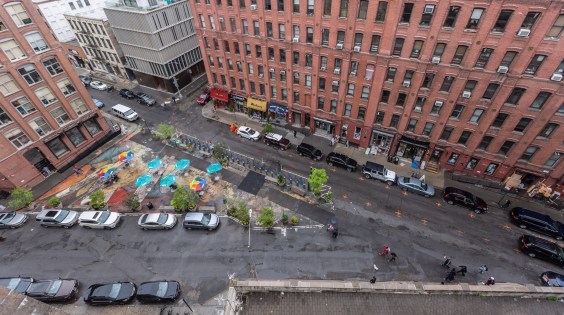According to an analysis by the Center for Neighborhood Technology of 2002 mortgage data, 250 people applied for mortgages every day in Chicago, and only 150 were approved. The top reason for rejecting the other 100? Applicants had too much credit tied up in car ownership.
And mortgage lenders have only gotten more skittish since then about overextended borrowers.
Transportation and housing are inextricably tied, but many people are slow to realize the full implications of this link. CNT President Scott Bernstein says that although lenders understand the link when it comes to rejecting applicants who are overextended on car payments, they don’t include transportation costs in their mortgage underwriting. (Changing this practice was a key recommendation of the Congressional Livable Communities Task Force's "Freedom From Oil" report.)
“The mortgage crisis was more intense in less location-efficient areas,” Bernstein said at a panel discussion on regional transportation planning for equity at the National Building Museum Monday. “I’m not saying car ownership caused it. But a precipitating factor was a lack of flexibility to tinker with your household budget because you had fixed costs for transportation.”
Transportation options, he said, could be an antidote to future recessions. They helped cushion the blow in urban areas, which saw an overall lower rate of foreclosure, even in poor neighborhoods. A 2010 study by NRDC found that in Chicago, Jacksonville, and San Francisco, “the probability of mortgage foreclosure increases as neighborhood vehicle ownership levels rise, after controlling for income.” [PDF]
Housing affordability looks very different when seen holistically as the cost of living in a certain place. “If you measure affordability as just the cost of housing as a ratio to income, 70 percent of people are living in an affordable situation,” Bernstein said. “When you account for transportation costs, that drops to 40 percent.”
CNT has a Housing + Transportation Affordability Index for people to check the true affordability of where they live, but most people don't access this kind of information when making decisions about where to live.
When agencies start considering housing and transportation costs at the regional level, major changes in infrastructure investment follow. Bernstein says that when Chicago and the Bay Area set out to reduce the joint costs of transportation and housing, their efforts resulted in the reprogramming of state money away from highway construction.
Of course, location efficiency isn’t what it used to be. Employment is less centered in cities now than in years past, as a recent Brookings report pointed out, so picking an efficient place to live is tricky. What if you live in a walkable, bikable neighborhood but you work on a suburban corporate campus? Robert Puentes of Brookings’ Metropolitan Policy Program, an author of the report, acknowledged, “It doesn’t make economic sense or spatially-efficient sense to start building transit lines way out into the suburbs.” But without those transit lines, the only way to get out to those inefficiently-located jobs is to drive.
“If being near transit stops can reduce your risk of foreclosure and increase your access to jobs, that‘s powerful,” said Bernstein. He advocates for a “jobs-to-people” policy, not a “people-to-jobs” policy. “We keep saying we can’t do anything about where businesses locate, when we pay them to locate there.” Incentives should work the other way, encouraging employers to locate in urban areas.
At the same time, Bernstein said, people need to make wiser decisions about where to live. “You think you’re moving to some lovely bucolic place called Whispering Acres or something, but you find yourself in a poverty trap, a foreclosure trap, a risk trap.”
Bernstein said transportation planners have their priorities wrong. “At the moment, transportation planners prioritize traffic throughput; then pay attention to intangibles like health, safety, and the environment; and, third, they look at economic factors,” he said. “That’s upside down. First, we need to invest in people so they have a fighting chance at participating in the economy. Then we need to look at how you can do that in a way that safeguards public health and the environment. And then we can look at how you can do it so you move people relatively quickly.”
Puentes agreed. “We have to look at issues through economic lens,” he said. “If we’re trying to increase manufacturing, double exports, or move to a lower carbon economy, all of these have transportation aspect but you can’t look at it through a transportation lens. You have to look at it through an economic lens. If you just look at throughput, you can’t get there.”





